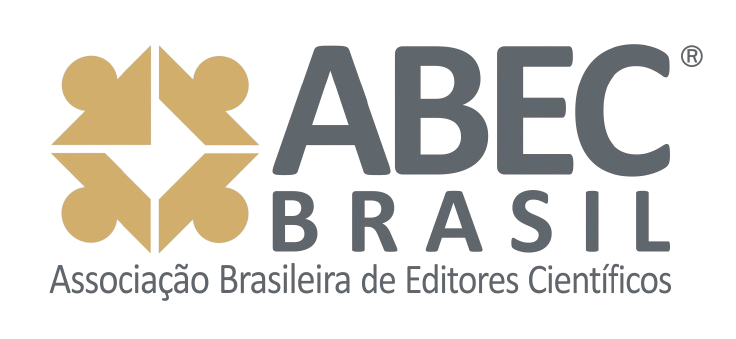MANUFATURA ENXUTA: METODOLOGIA A3, MAPEAMENTO DE FLUXO DE VALOR E KAIZEN VOLTADOS À MANUFATURA ENXUTA
DOI:
https://doi.org/10.24883/IberoamericanIC.v8i4.296Keywords:
Manufatura Enxuta, Kaizen, metodologia A3,Abstract
Este artigo buscou entender conceitualmente algumas ferramentas do Lean Manufacturing, tais como A3, Mapeamento de Fluxo de Valor e Kaizen, a fim de desenvolver uma metodologia que auxilie os empresários de empresas de pequeno e médio porte da região da serra gaúcha a alcançarema melhor produtividade, competitividade e, por consequência, lucratividade de suas organizações. O objetivo da pesquisa foi verificar qual estratégia operacional empresários utilizam atualmente e testar a metodologia desenvolvida a fim de entender sua aplicabilidade e aceitação entre os sujeitos pesquisados. Diante disso, por meio de uma pesquisa qualitativa, exploratória e descritiva desenvolvida com o auxílio de questionários com três entrevistados dos ramos moveleiro, agrícola e de fundição, em que pretendeu-se verificar qual estratégia operacional esses empresários utilizam, a fim de testar a metodologia desenvolvida para entender sua aplicabilidade e aceitação entre os sujeitos pesquisados. Conclui-se que as empresas não adotam as práticas de manufatura enxuta na sua essência, mas demonstraram interesse em aplicá-las, pois entendem que seriam capazes de tornar a empresa mais competitiva e lucrativa.
Downloads
References
CRESWELL, John W. Projeto de pesquisa métodos qualitativo, quantitativo e misto. In: Projeto de pesquisa métodos qualitativo, quantitativo e misto. Artmed, 2010.
SILVA, Marina Hernandes de Paula e; DE OLIVEIRA, Maria Celia. Avaliação de um sistema de produção por meio da aplicação do mapeamento do fluxo de valor. XXXVI Encontro Nacional de Engenharia de Produção. Anais... p. 3, 2016.
FACKLER, Martin. The ‘Toyota Way’is translated for a new generation of foreign managers. The New York Times, February, v. 15, p. 01, 2007.
MALHOTRA, Naresh K. Pesquisa de marketing: uma orientação aplicada. Bookman Editora, 2012.
MARTINS, Guilherme Sampaio et al. A aplicação da manufatura enxuta no processo de separação de pedidos em uma indústria de alimentos, p. 3, 2016.
ORTEGA, Cesar H.; GARRIDO-VEGA, Pedro; DOMINGUEZ MACHUCA, Jose Antonio. Analysis of interaction fit between manufacturing strategy and technology management and its impact on performance. International Journal of Operations & Production Management, v. 32, n. 8, p. 958-981, 2012. DOI: https://doi.org/10.1108/01443571211253146
PARANHOS FILHO, Moacyr. Gestão da produção industrial. Editora Ibpex, p.154, 2007.
ROTHER, Mike; SHOOK, John. Aprendendo a enxergar: mapeando o fluxo de valor para agregar valor e eliminar o desperdício: manual de trabalho de uma ferramenta enxuta. Lean Institute Brasil, 2003.
SHOOK, J. Gerenciando para o aprendizado. São Paulo: Lean Institute Brasil, 2008.
TONTISET, Nattawu; CHOOJAN, Jirapan. Successful of strategic cost management of electronics manufacturing business in Thailand: an empirical research of its antecedents and consequences. International Journal of Business Strategy, v. 12, n. 3, p. 133-149, 2012.
WOMACK, J. P.; JONES, D. T. A mentalidade enxuta nas empresas – elimine o desperdício e crie riquezas. Rio de Janeiro: Campus, 1998.
Downloads
Published
How to Cite
Issue
Section
License
Authors who publish with this journal agree to the following terms:
1. Authors who publish in this journal agree to the following terms: the author(s) authorize(s) the publication of the text in the journal;
2. The author(s) ensure(s) that the contribution is original and unpublished and that it is not in the process of evaluation by another journal;
3. The journal is not responsible for the views, ideas and concepts presented in articles, and these are the sole responsibility of the author(s);
4. The publishers reserve the right to make textual adjustments and adapt texts to meet with publication standards.
5. Authors retain copyright and grant the journal the right to first publication, with the work simultaneously licensed under the Creative Commons Atribuição NãoComercial 4.0 internacional, which allows the work to be shared with recognized authorship and initial publication in this journal.
6. Authors are allowed to assume additional contracts separately, for non-exclusive distribution of the version of the work published in this journal (e.g. publish in institutional repository or as a book chapter), with recognition of authorship and initial publication in this journal.
7. Authors are allowed and are encouraged to publish and distribute their work online (e.g. in institutional repositories or on a personal web page) at any point before or during the editorial process, as this can generate positive effects, as well as increase the impact and citations of the published work (see the effect of Free Access) at http://opcit.eprints.org/oacitation-biblio.html
• 8. Authors are able to use ORCID is a system of identification for authors. An ORCID identifier is unique to an individual and acts as a persistent digital identifier to ensure that authors (particularly those with relatively common names) can be distinguished and their work properly attributed.













